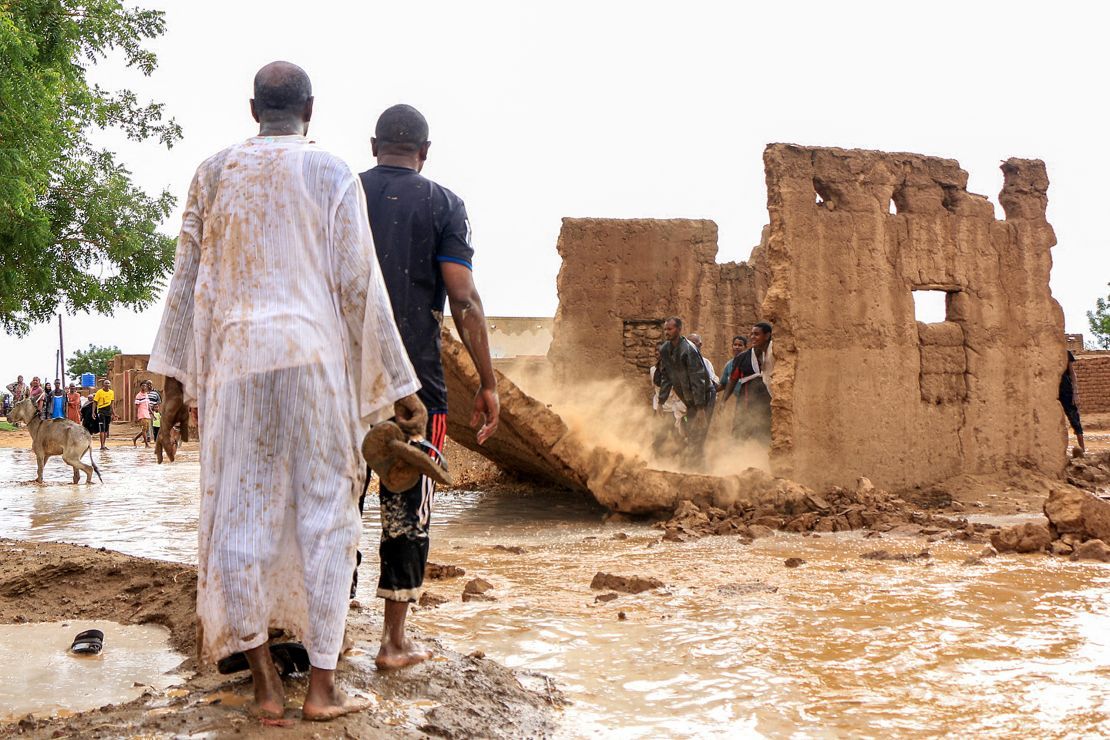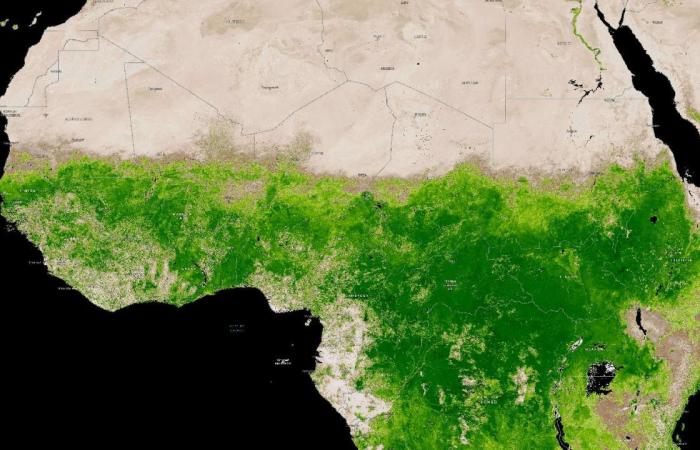CNN
—
There isn’t much green in the Sahara Desert, but after an unusual influx of rain, the color can be seen from space creeping into parts of one of the driest places in the world.
Satellites recently captured plant life blooming in parts of the typically arid southern Sahara after storms moved there when they shouldn’t. It has also caused catastrophic flooding. And scientists say a world warming due to fossil fuel pollution is making both more likely.

Satellite imagery from NASA’s MODIS satellite depicts vegetation extent (green coloring) over Africa on September 12, 2024, versus the same day in 2023. Vegetation reaches much farther north in 2024 in places like Niger and Chad and is more lush (darker green) just above the equator in a place like the Central African Republic.
NASA
Rainfall north of the equator in Africa typically increases from July through September as the West African Monsoon kicks into gear.
The phenomenon is marked by an increase in stormy weather that erupts when moist, tropical air from near the equator meets hot, dry air from the northern portion of the continent. The focus for this stormy weather – known as the Intertropical Convergence Zone – shifts north of the equator in the Northern Hemisphere’s summer months. Much of it sags south of the equator during the Southern Hemisphere’s warm months.
But since at least mid-July, this zone has shifted farther north than it typically should, sending storms into the southern Sahara, including portions of Niger, Chad, Sudan and even as far north as Libya, according to data from NOAA’s Climate Prediction Center.
As a result, these portions of the Sahara Desert are anywhere from twice as wet to more than six times wetter than they should be.
There are two potential causes for this strange shift north, according to Karsten Haustein, a climate researcher at Leipzig University in Germany.
The transition from El Niño to La Niña has influenced how far north this zone has moved this summer Haustein said. El Niño – a natural climate pattern marked by warmer than average ocean temperatures in the equatorial Pacific – typically leads to drier than normal conditions in the wet portions of West and Central Africa. La Niña, or even a budding one, can have the opposite effect.
A warming world is the other significant factor.
“The Intertropical Convergence Zone, which is the reason for (Africa’s) greening, moves farther north the warmer the world gets,” Haustein explained. “At least, this is what most models suggest.”
A study published in the journal Nature this June found farther northward shifts in this zone could happen more frequently in the next couple decades as carbon dioxide – a byproduct of fossil fuel pollution – levels increase and the world warms.
The shift isn’t just turning deserts green, it has disrupted the Atlantic hurricane season and had major consequences over the past few months for several African countries.
Countries that should be getting more rainfall are getting less as storms shift north. Parts of Nigeria and Cameroon typically get drenched with at least 20 to 30 inches of rain from July to September, but have only received between 50 and 80% of their typical rain since mid-July, according to CPC data.
Farther north, typically drier areas, including parts of Niger, Chad, Sudan, Libya and southern Egypt have received more than 400% of their typical rainfall since mid-July, according to CPC data.

Take the northern portion of Chad, which is part of the Sahara Desert. Only up to an inch of rain typically falls here from about mid-July to early September. But anywhere from 3 to 8 inches of rain has fallen in the same timeframe this year, according to CPC data.
This excessive rainfall caused devastating flooding in Chad. Nearly 1.5 million people have been impacted and at least 340 have been killed by flooding in the country this summer, according to a United Nations briefing.
Horrific flooding has also killed more than 220 people and displaced hundreds of thousands in Nigeria, mainly in the typically drier northern portion of the country, CNN previously reported.

Deadly flooding also rocked Sudan in late August, killing at least 132 people and destroying more than 12,000 homes.
Flooding events like these likely have the fingerprints of climate change, according to Haustein, who works on attribution studies to determine to what extent climate change has influenced a particular weather event.
As the world warms, it will be able to hold more moisture, Haustien explained. This could lead to wetter overall monsoons and more devastating flooding like this season.
More research will be needed to determine just how much of role climate change played in each flooding event, but it could be a sign of things to come, Haustien said.
“Every single event is affected by climate change,” Haustein said. “(Even if) no single flood is (directly) caused by climate change, it has been made more likely.”








